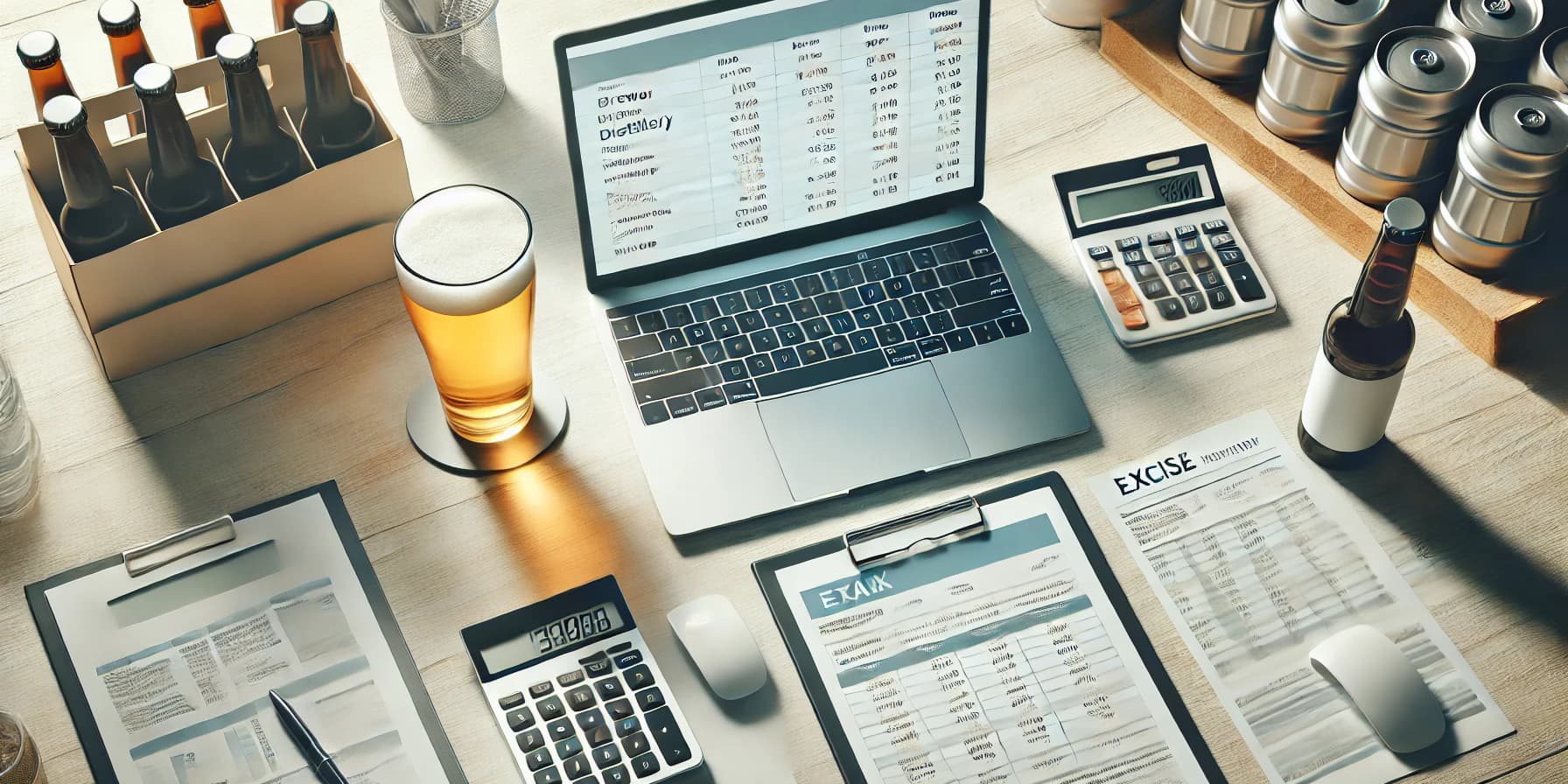How to Stop Overpaying
The first step is visibility. When production, inventory, and sales data are aligned, errors become easy to spot.
Here’s what leading producers are doing to tighten control:
-
Automate Duty Calculations: Use systems that apply up-to-date rates automatically.
-
Centralize Data: One source of truth for production, ABV, and stock levels.
-
Cross-Check Regularly: Review reports monthly rather than annually.
-
Track Rebates and Credits: Ensure eligible claims aren’t left unfiled.
-
Audit Digitally: Keep digital records ready for inspection or submission.
-
Store Excise Returns Separately: Maintain a separate folder (digital and/or PDF archive) of all submitted excise returns — so in the event of an audit, everything is easy to access and reconcile.
The Hidden Cost in Every Batch
Excise duty is unavoidable — but overpaying it doesn’t have to be.
Across wineries, breweries, and distilleries, we see the same story: producers unknowingly hand over thousands more than they should. The reason isn’t negligence; it’s complexity.
Excise rules are dense, rates shift, and production data often lives in multiple spreadsheets or disconnected systems. A small discrepancy in ABV, a missing rebate claim, or an outdated rate can quietly chip away at your profits. The good news? These mistakes are entirely preventable with the right visibility and systems in place.
Why Excise Calculations Are So Complicated
Excise tax isn’t a flat rate — it depends on your product type, strength, and volume. Wine, beer, and spirits are all taxed differently, and each has thresholds or reliefs that can change year to year.
When you’re juggling production schedules, bottling runs, and compliance paperwork, keeping up with every detail is tough. Add manual entry or disconnected data, and it’s easy to see how a 0.5% ABV miscalculation across a few thousand litres can turn into hundreds — or even thousands — in excess tax.
Case Study: A 0.5% ABV Difference Can Cost You Thousands
Let’s take a typical example.
A brewery producing 10,000 L of beer at 5.9% ABV sits comfortably in Bracket 2. If a batch ferments a little higher and finishes at 6.1%, it moves into Bracket 3 — changing how the excise is calculated (from “per litre alcohol” to “per litre beverage”).
That 0.2% increase might not change the flavour noticeably, but it increases the excise cost by around 30–40 c per litre. Over 10,000 L, that’s roughly $3,000–$4,000 in extra duty — all from a tiny shift in alcohol content.
This does not happen in all Excise Duty regimes, but it does in many such as the UK and New Zealand where excise bands change in calculation method or rate from one to the next.
For distillers and winemakers, similar jumps between strength brackets or missing claims for losses, wastage, or small-producer relief can have an even greater impact.
The Most Common Causes of Overpayment
Even well-run operations fall into familiar traps:
- Inaccurate Volume or ABV Reporting: Rounding, evaporation, or testing variations can distort duty figures.
- Incorrect Duty Rates: Using outdated or mismatched rate bands for product strength or category.
- Missed Rebates and Credits: Failing to claim small producer reliefs or returns for wastage and exports.
- Batch Record Gaps: Differences between production, inventory, and sales logs that make compliance checks painful.
- Lack of Integration: When your production, inventory, and accounting tools don’t “talk,” data inconsistencies creep in.
Each of these might seem small — but combined, they can create a steady leak of profit.
The Ripple Effect on Your Bottom Line
Every overpaid dollar of excise is a dollar that could have gone back into your business.
Beyond the obvious loss, inaccurate records can slow down audits, delay filings, or trigger compliance reviews. Overpayments also strain cash flow — especially for smaller producers already balancing aging stock, equipment costs, and seasonal sales.
In short: excise mistakes don’t just cost money. They cost time, confidence, and peace of mind.
How to Stop Overpaying
The first step is visibility. When production, inventory, and sales data are aligned, errors become easy to spot.
Here’s what leading producers are doing to tighten control:
- Automate Duty Calculations: Use systems that apply up-to-date rates automatically.
- Centralise Data: One source of truth for production, ABV, and stock levels.
- Cross-Check Regularly: Review reports monthly rather than annually.
- Track Rebates and Credits: Make sure eligible claims aren’t left unfiled.
- Audit Digitally: Keep digital records that are ready for submission or inspection.
These small process improvements can turn excise compliance from a headache into a source of savings.
Technology That Keeps You Compliant (and Profitable)
Software like Vinsight is built to help you easily do your Excise Duty reporting and compliance.
With Vinsight, every litre and ABV change is tracked automatically from fermentation to dispatch. The system applies the correct rates, stays current with regulation updates, and integrates with your accounting tools for seamless reporting.
Excise returns that used to take hours can now be generated in minutes — accurately, consistently, and without costly surprises. Read more about this here: https://docs.vinsight.net/excise-tax-assessments.
Don’t Let Tax Be Your Biggest Expense
Overpaying excise duty is more common than you’d think — but it’s also one of the easiest mistakes to fix. Also inaccurate reporting leads to other compliance issues.
Take time to review your current process, look for data gaps, and consider whether your systems are doing enough of the heavy lifting. Even a small correction can make a big difference to your bottom line.






